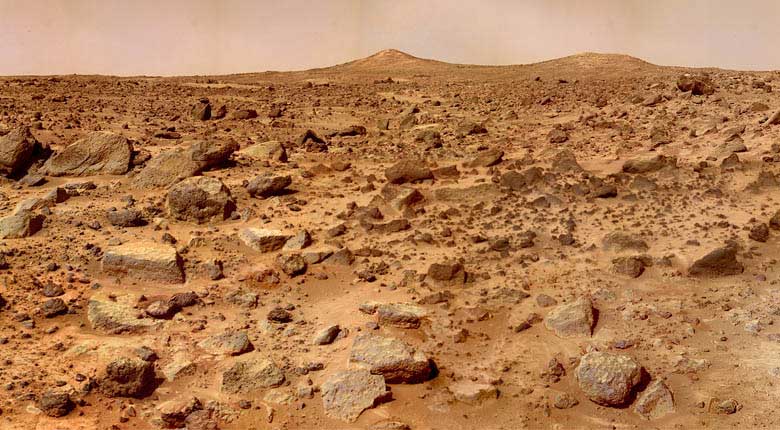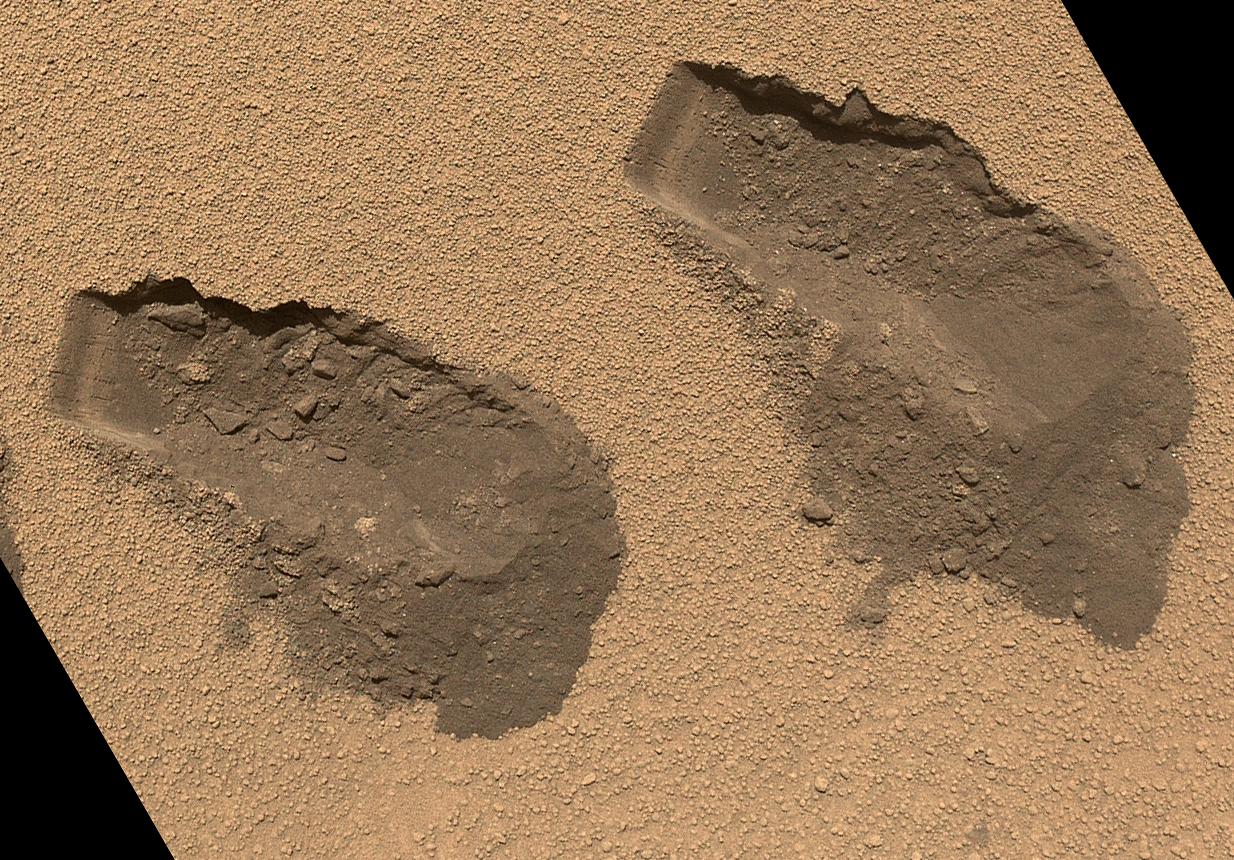Astrobiologists from the University of Edinburgh believe that there is no life on Mars because of toxic chemical compounds

Scientists still have no answers to the questions “Is there life on Mars?” And “Did it exist before?”, Despite many decades of studying the Red Planet. Nevertheless, experts still try to get unambiguous, and most importantly, correct answers. For this purpose, for example, the Mars 2020 project is being implemented. Within its framework, it is planned to launch another rover on Mars, which will be engaged in astrobiological research of the ancient environment on Mars, the surface of the planet, study the evolution of geological processes, and much more.
Some scientists are convinced that life could exist on Mars earlier, since rivers flowed across the surface of the planet, perhaps there were warm seas. But is there life on Earth's neighbor today? Astrobiologists from the University of Edinburgh believe that there is not, because the current conditions of the planet are disastrous for any life, including bacteria.
The colleagues of this team of astrobiologists are sure that life on Mars can exist even now, despite the rather high level of UV radiation sterilizing the upper layers of the soil, low temperature and rarefied atmosphere. Scientists say that at a depth of 2-3 meters there are conditions comfortable enough for bacteria. Moreover, there is much evidence that under the ground in many regions of Mars lurking deposits of ice, a source of liquid water. "At these depths, perhaps the Martian microorganisms are able to survive," says Jennifer Wadsworth, a graduate student at the University of Edinburgh.
')
Wadsworth research is conducted in the field of geochemistry. She studies perchlorates, which, as it turned out, are quite a few in the earth of the planet. For the first time, these compounds were discovered by the Viking about 40 years ago. The data collected by the device, confirmed Curiosity and MRO (Mars Reconnaissance Orbiter). Terrestrial microorganisms can not exist in the soil with a high content of perchlorates. But perhaps on Mars, the situation is somewhat different. In theory, bacteria can adapt to high concentrations of these oxidants. Moreover, microorganisms are quite able to develop a method of obtaining energy from perchlorates.
But what about the practice? Wadsworth, along with colleague Charles Cokell, an astrobiologist at the University of Edinburgh, tested the resistance of terrestrial bacteria to perchlorate. It turned out that the terrestrial bacterium Bacillus subtilis (hay bacillus), which usually lives in the soil, is not able to tolerate the combination “ultraviolet + perchlorate”. UV radiation gradually kills soil bacteria. But if there is perchlorate in the soil, the microorganisms die much faster. And the conditions of Mars are just ultraviolet + perchlorates.

The fact is that ultraviolet radiation turns perchlorates into hypochlorite and chlorite, compounds that are even more harmful to bacteria than perchlorate. But that's not all. The fact is that in the soil of Mars there are a lot of iron oxides and even hydrogen peroxide. All of these factors are a lethal combination for almost any terrestrial bacteria. The same Bacillus subtilis in the presence of all these compounds and UV radiation dies out 11 times faster than in the presence of only ultraviolet or perchlorate. Thus, the ground of Mars is extremely unsuitable for microbial life.
At the same time, the very “traces of water flows” on Mars are extremely rich in perchlorates. So it is here, according to Wadsworth, that life is the last thing to look for. Most likely, microorganisms need to try to find somewhere in the shade, and at a relatively large depth. The study of graduate students and her colleagues praised other scientists, who consider it a significant step forward in the search for traces of life on the Red Planet.
Anyway, if there are no bacteria on Mars now, they could well have existed in the past. In order to study the conditions of the planet in the past, it is necessary to study not only the near-surface layers, but also to go further. It may well be that traces of the microbial life of the distant past of the Earth’s neighbor have remained at great depth.
The Mars 2020 project can find these traces; in any case, astrobiologists and scientists of other specialties are hoping for it. Biomarkers, traces of the existence of life, this unit will look very carefully. It is equipped with a drill, which can dive to a depth of up to 2 meters. And this is very important, because already at a depth of several millimeters there is no UV radiation, at a depth below 1 meter there is practically no perchlorate. And at a depth of one and a half meters does not penetrate the ionizing radiation of the sun. Here you should look for traces of life. It remains to wait quite a bit, and the "Mars 2020" will provide answers to many questions that have interested scientists and ordinary people for decades.
Source: https://habr.com/ru/post/373615/
All Articles